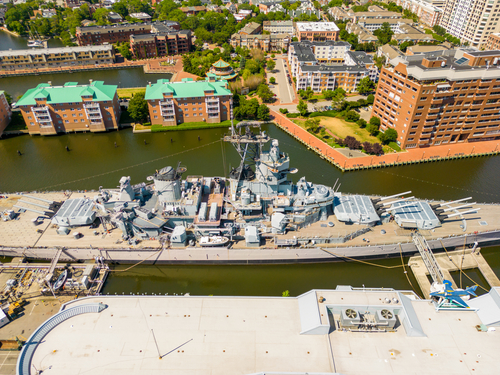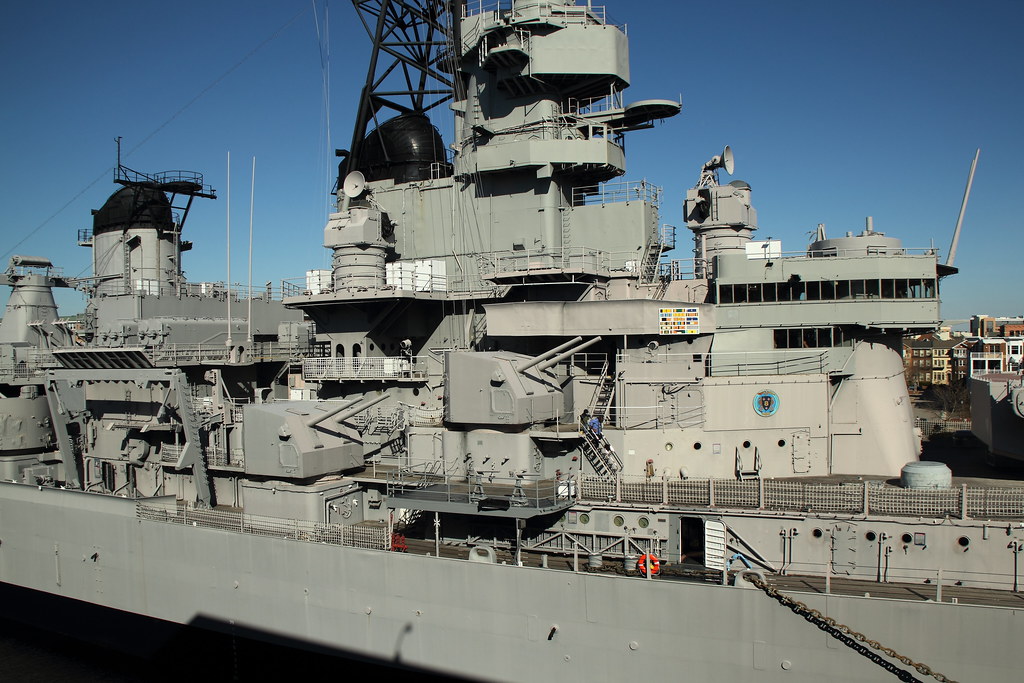
The USS Wisconsin (BB-64), a revered icon of American naval might, recently marked a milestone anniversary with a ceremony that encapsulated its storied history. The battleship celebrated its 80th “Oak Anniversary” in Norfolk, Virginia, where a time capsule ceremony unfolded, bridging the past with the future.

Launched on December 7, 1943, on the second anniversary of the Pearl Harbor raid, the USS Wisconsin served with distinction across several decades and wars. During World War II, it was a force to be reckoned with in the Pacific, earning five battle stars.

Its service extended into the Korean War, providing crucial naval gunfire support, and later, it proved its enduring value during Operation Desert Storm by launching Tomahawk missiles at Iraqi targets.

The Wisconsin, along with its Iowa-class brethren, represented the epitome of battleship design—a harmonious blend of speed, firepower, and versatility.

These vessels were not only capable of keeping pace with carrier strike forces but also boasted the firepower to engage in traditional battleship roles. They were the largest and most powerful battleships built for the U.S. Navy and the final ones to enter service.

During the “Oak Anniversary” ceremony, a time capsule filled with artifacts from the battleship’s history was sealed, to be opened on its centenary in April 2044.

Among the items interred were a piece of the deck from the 1940s, a commemorative coin, an engraved sailor’s lighter, and a letter from Virginia Sen. Mark Warner.

Norfolk Mayor Kenny Alexander hailed the USS Wisconsin as “one of the most iconic landmarks” in the city, emphasizing its significance to naval history.

The legacy of the Iowa-class battleships remains a topic of discussion and debate. In the 1980s, the Reagan administration’s push for a 600-ship navy led to the reactivation of all four Iowa-class ships, upgraded with modern weapons systems.

Despite their reactivation, these colossal ships were eventually decommissioned, but their presence on the Naval Vessel Register (NVR) continues to stir conversation about their potential utility in modern warfare.

Critics point to the challenges and prohibitive costs of reactivating such ships, alongside the advent of more advanced and cost-effective weaponry such as the 5-inch/62-caliber gun and the vertical gun for advanced ships (VGAS), which boast greater ranges and accuracy.

Furthermore, there is the consideration of more modern and versatile platforms like destroyers, which can carry an extensive array of missiles and require smaller crews.

Despite these modern advancements, the decision to keep the USS Wisconsin and her sister ships in reserve reflects a lingering respect for the capabilities and symbolism these battleships hold. In the realm of naval history and military heritage, the Wisconsin represents a bridge between the power of the past and the technology of the future.

While the likelihood of these majestic warships returning to active duty is slim, their preservation as museum ships ensures that future generations can appreciate their historical significance.

The USS Wisconsin continues to stand as a lasting memorial to the sailors who served aboard and as a testament to the era of the battleship—a period marked by colossal sea-going fortresses dominating the oceans with their might.

